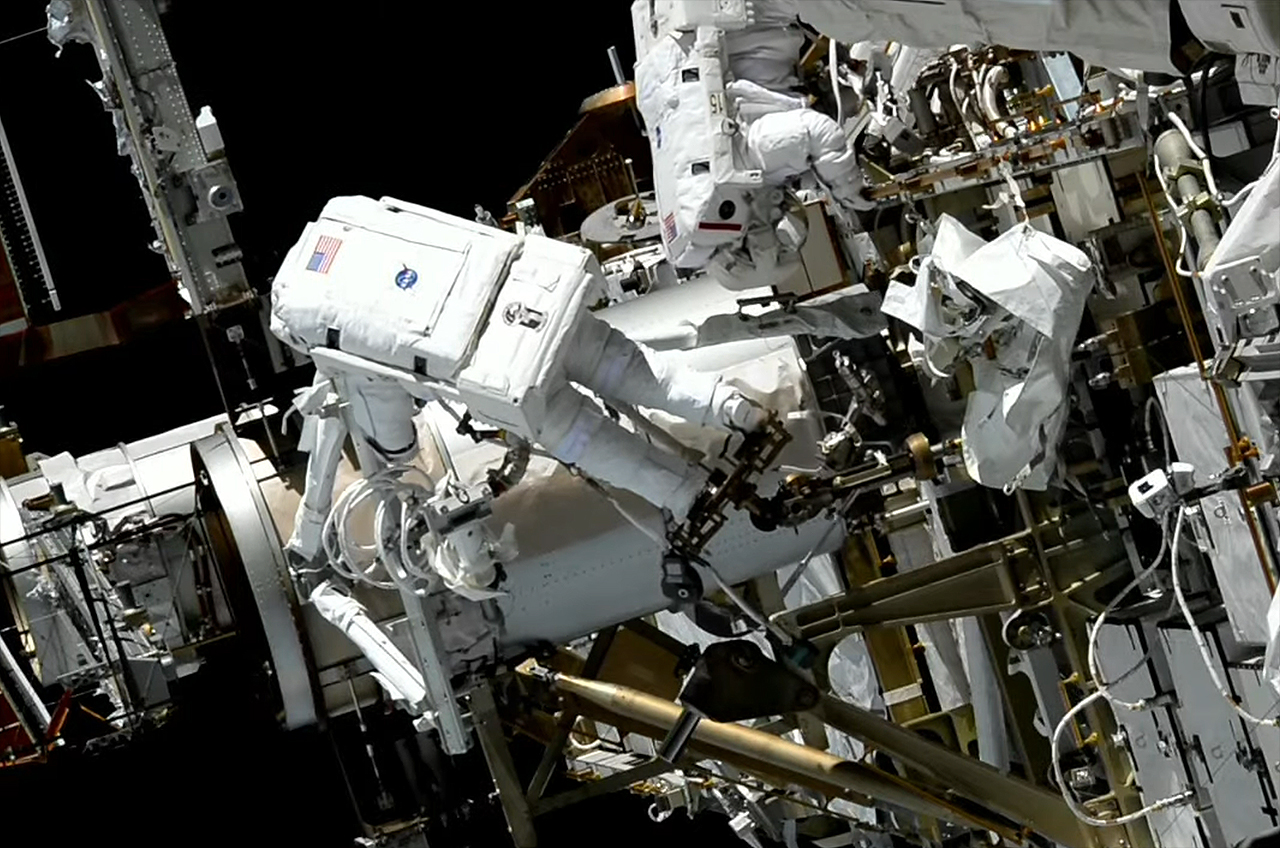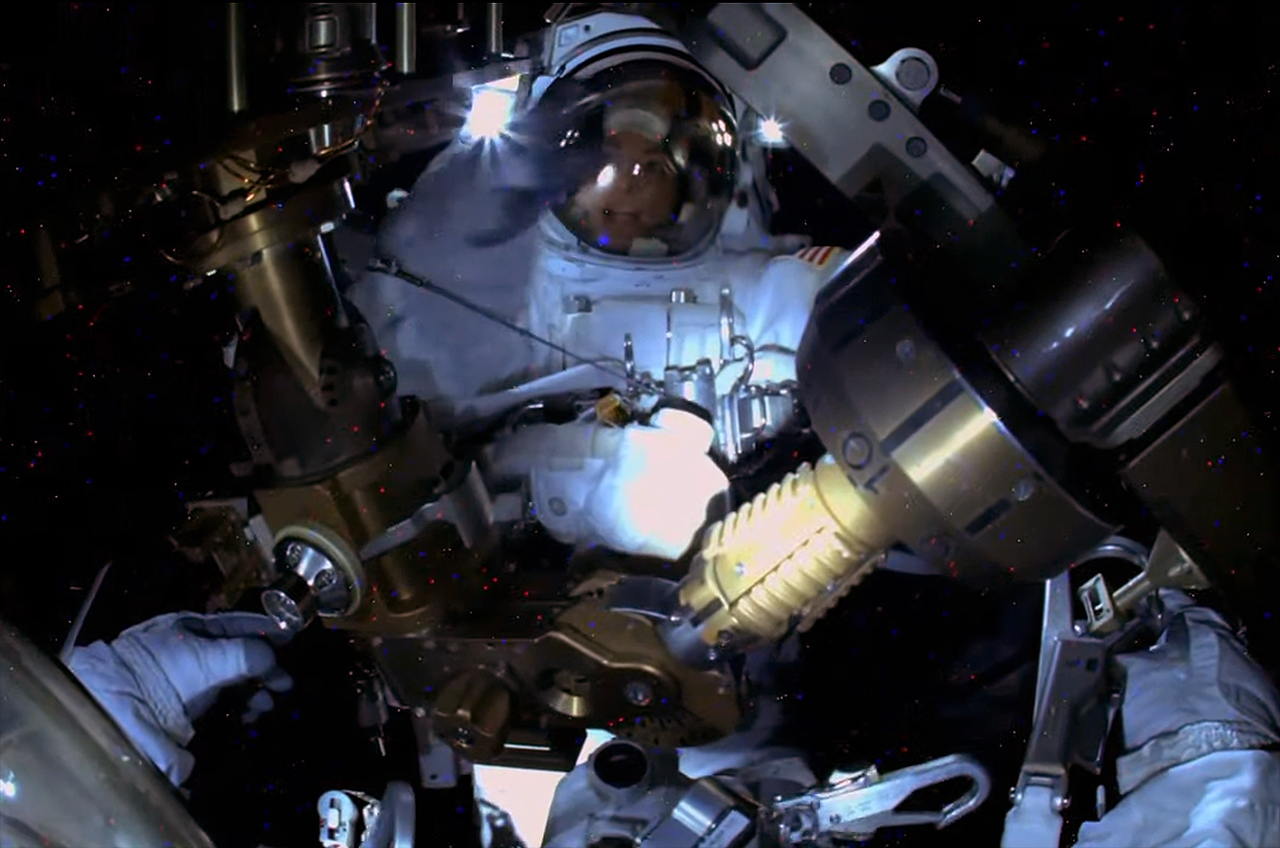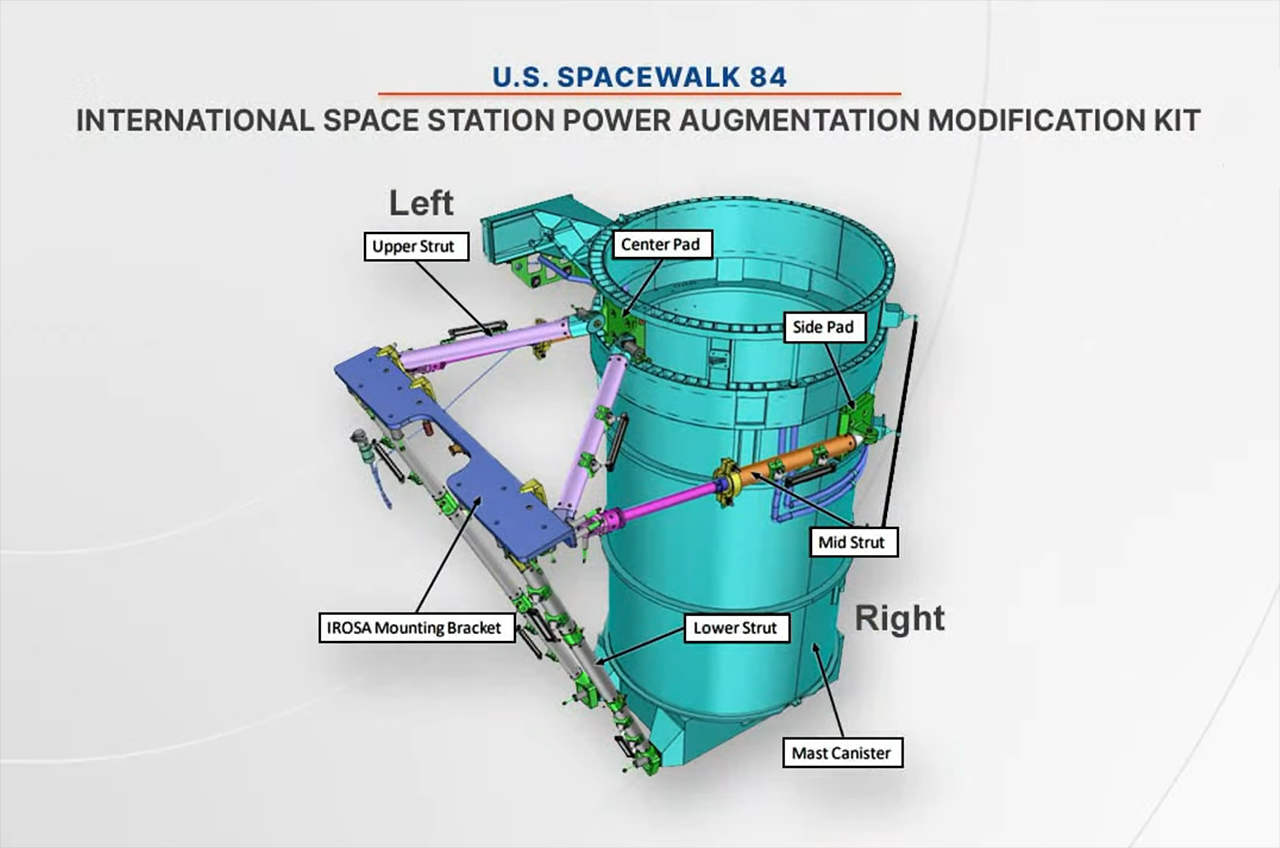Spacewalking astronauts hit snags installing new solar array mount outside space station
Koichi Wakata and Nicole Mann wrapped up their spacewalk without completing assembly of a new roll-out solar array mounting platform as planned.
A "sticky" foothold and a stubborn strut caused problems for two spacewalking astronauts as they worked to prepare the International Space Station (ISS) for the addition of two more upgraded solar arrays.
Expedition 68 crewmates Nicole Mann of NASA and Koichi Wakata of the Japan Aerospace Exploration Agency (JAXA) conducted the 7 hour and 21 minute extravehicular activity (EVA) on Friday (Jan. 20). The two astronauts took their spacesuits to battery power and exited the station's U.S. Quest airlock to begin the spacewalk at 8:14 a.m. EST (1314 GMT).
The latest in a series of EVAs devoted to augment the orbiting complex's power channels with new International Space Station Roll-Out Solar Arrays (iROSAs), Mann and Wakata's primary objectives were to complete the installation of two mounting platforms on the starboard side of the station's backbone truss.
After configuring their tethers and gathering their tools, the two spacewalkers began their work by heading off to two different worksites. Wakata first focused on tightening the bolts on a iROSA mounting platform that was installed for the 1A power channel during an earlier spacewalk as Mann delivered the tools and equipment for the assembly of a new mount to support the 1B power channel.
Related: The most memorable spacewalks of all time in pictures

Meeting up, the two astronauts then began erecting the new triangle-shaped platform. To better position herself to bolt the mount pieces together, Mann used an articulating portable foot restraint, or APFR — though not without some trouble.
"This APFR is so happy I got ingressed, it does not want to let me go!" radioed Mann after needing Wakata's help to get her feet situated in the device. Wakata again moved over to her location to help her get free, and then they both spent several minutes and considerable force to reconfigure the foothold, which Mission Control acknowledged had a known "sticky" patch.
Get the Space.com Newsletter
Breaking space news, the latest updates on rocket launches, skywatching events and more!
The extra time needed to work with the AFPR left the two astronauts about 45 minutes behind in their timeline.

While working to assemble the new mount, Wakata and Mann were able to piece together three of the four components successfully. The upper strut, iROSA mounting bracket and lower strut came together as expected, but the middle (or mid) strut would not seat correctly. After spending some time trying to troubleshoot the problem, Mission Control called the attempt off.
"We're going to wrap up," radioed astronaut Zena Cardman, who served as the spacewalk's capcom (or communicator) from inside Mission Control in Houston. "We need to get into some cleanup steps and get you guys back inside. So what we want you to do is compress that mid-strut [and] get it back in your strut bag."
The installation of the mid-strut will be left for another spacewalk.

The ISS Roll-Out Solar Arrays are being installed in front of, and partially overlying, the station's existing, slightly degraded solar panel wings. When used in tandem and once all six iROSAs are in place, the upgraded power system will increase the station's electricity supply by 20 to 30%.
To date, four of the six iROSA assemblies have been deployed and are in working order. The 1A and IB power channels are the last to be augmented. The arrays for those two channels are still to be launched to the space station later this year.
Wakata and Mann reentered the Quest airlock, closed the hatch and began repressurization at 3:35 p.m. EST (2035 GMT), ending the EVA.
The spacewalk was the first for both Mann and Wakata, as well as the first conducted this year. It was the fifth EVA conducted during Expedition 68 and 258th overall in support of ISS assembly and maintenance.
Follow us @Spacedotcom, Facebook and Instagram.
Join our Space Forums to keep talking space on the latest missions, night sky and more! And if you have a news tip, correction or comment, let us know at: community@space.com.

Robert Pearlman is a space historian, journalist and the founder and editor of collectSPACE.com, a daily news publication and community devoted to space history with a particular focus on how and where space exploration intersects with pop culture. Pearlman is also a contributing writer for Space.com and co-author of "Space Stations: The Art, Science, and Reality of Working in Space” published by Smithsonian Books in 2018.In 2009, he was inducted into the U.S. Space Camp Hall of Fame in Huntsville, Alabama. In 2021, he was honored by the American Astronautical Society with the Ordway Award for Sustained Excellence in Spaceflight History. In 2023, the National Space Club Florida Committee recognized Pearlman with the Kolcum News and Communications Award for excellence in telling the space story along the Space Coast and throughout the world.









